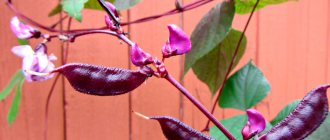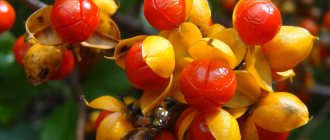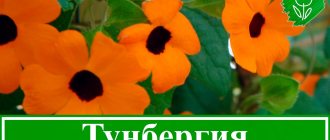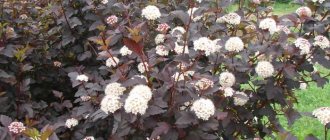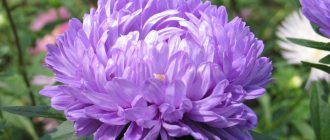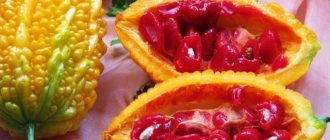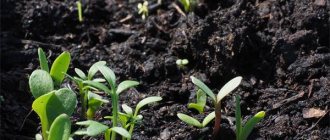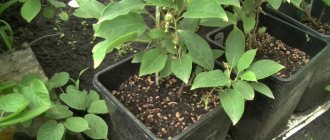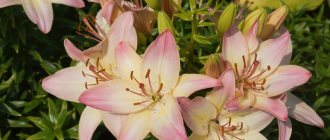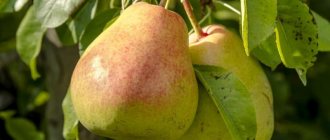Climbing honeysuckle becomes a decoration of any garden and is considered a hedge. This ornamental plant is found in the forest belts of Northern and Central Europe, but is also common in the African jungle. The deciduous shrub has beautiful flowers, which many gardeners love to watch. Before you decide to plant honeysuckle, familiarize yourself with the features of this ornamental plant.
Curly decorative honeysuckle
Climbing honeysuckle has beautiful flowers
This type of honeysuckle makes a hedge
Decorative honeysuckle does not bear fruit
Advantages and disadvantages of decorative climbing honeysuckle
In the northern regions, the root system of climbing honeysuckle freezes, the bushes become deformed, and the plant does not bear fruit. Therefore, it is better not to grow it in Siberia. There are a number of significant advantages to choosing climbing honeysuckle:
- ease of care;
- drought resistance;
- fast growth rates;
- stable immunity;
- long flowering period;
- growth with limited light access;
- ease of reproduction;
- resistance to harmful insects;
- average life expectancy is 50 years.
In addition to intolerance to extreme cold, the ornamental plant has other disadvantages that are important to familiarize yourself with before planting:
- the need to form a bush;
- pruning, garter honeysuckle;
- cleaning the plant for the winter;
- poor growth in the shade;
- poor growth when transplanted from place to place;
- risk of damage by harmful insects.
Brown's honeysuckle
This variety has great decorative value. Its flowers are large and bright. The flowering period occurs in the summer months. As soon as it ends, bright red fruits take the place of the flowers. However, the disadvantage of Brown's honeysuckle is that it does not bloom every year. As for the characteristics of this variety, it is not frost-resistant. Therefore, it is better to cover it for the winter. And when choosing a place for planting, you need to know that cold winds have a detrimental effect on Brown's honeysuckle.
Features of cultivation
For honeysuckle to grow, it needs vertical support (trellises, stakes, canopies, etc.). The plant creeps up and reaches its maximum size. Without support, honeysuckle remains on the ground: first withers, then rots. When properly designed, a plastic shrub becomes the highlight of a landscape design.
With climbing honeysuckle you can enclose a fence, a country house, a gazebo, or make a living canopy or hedge. For rapid growth, the plant requires regular watering, staking branches and removing side shoots. Otherwise, the bush grows chaotically and quickly loses its decorative appearance.
The plant loves sun and warmth, but also quickly grows tall in the shade. In the latter case, the flowers are not bright, but the fruits are small. The best place to grow climbing honeysuckle is the south side. It is best to plant in autumn or early spring.
Purpose and characteristics of decorative honeysuckle
This deciduous shrub reaches a height of 6 m. The length of the leaves is up to 10 cm, the shape (lanceolate or oval) depends on the type of honeysuckle, the flowers are voluminous, raspberry or pink in color, with a persistent aroma. Red fruits, although visually attractive, are very poisonous, unsuitable for consumption, and do not have medicinal properties.
The honeysuckle bush begins to bloom in the spring - from May, June to the end of August. During this period, it emits a stable, pleasant aroma. After the end of the season, the plant sheds up to 1,000 flowers, the smell becomes less intense.
German honeysuckle attracts with its variety of colors - buds from white to purple shades. Whereas ripe fruits are exclusively dark red.
Types and varieties
For planting in the garden, summer residents choose climbing, bush, and Chinese honeysuckle. Honeysuckle and Brown's honeysuckle are also popular.
Curly
This variety of honeysuckle blooms in late May or early June and looks like a grape vine . It is grown in central Russia, northern and southern regions - the plant quickly adapts to any climatic conditions. The leaves are ovate-oval, the outer side is dark green, the inner side is gray. The fruits are dark red, the flowers are pink-violet or white, with long petals.
Maaka
The Maaka variety is distinguished by large snow-white flowers and spherical bright red berries. The height of the bush is 4-5 m, the crown is spreading, the leaves are large and pointed. Flowers with weak pubescence, paired. The fruits ripen in the second half of August and are not suitable for food.
Maak's climbing honeysuckle ripens quickly, the shoots are strong and fruit-bearing. It is shade-tolerant, but for abundant fruiting it is recommended to grow it in sunny areas. The variety is drought-resistant and grows even on rocky soil. Improve flowering through regular pruning and fertilizing.
Belgica Select
Height - 4-6 m, leaves are rough and hard, green-blue color. Tubular-shaped flowers, yellow-red, original. Some varieties of Belgica Select flowers have a pink-violet hue. The berries are red and small. The variety blooms mainly in May and is unpretentious in terms of care and growing temperature. Even a few Belgica Select bushes will transform and improve the garden.
Chick Chock
Honeysuckle is low-growing, up to 80 cm high. The bushes are compact, suitable for landscaping small garden plots. Chick Chok buds are purple-pink, at the moment of opening they acquire a rich pink-white hue, and over time they become orange-yellow. Flowering lasts from June to July. It is recommended to grow the climbing honeysuckle Chik Chok in regions with a temperate climate. Honeysuckle tolerates frosts down to -23°C.
Graham Thomas
A profusely flowering variety of climbing honeysuckle with a pleasant aroma. The white flowers turn yellow over time and are arranged in pairs or groups. Flowering begins in May and ends in September. The leaves are large and dense, which adds decorativeness to the plant. The height of the shrub is 3-4 m, the annual growth reaches 2 m. Graham Thomas prefers moist and fertile soils. Used to decorate gazebos, arches, houses. Decorative red and orange honeysuckle fruits appear in June.
Honeysuckle
The most famous and popular decorative honeysuckle, honeysuckle prefers well-moistened and sunny areas; it grows poorly in the shade. Flowers appear in May - large and snow-white with a pleasant aroma. Sometimes, depending on the subspecies, honeysuckle blooms with yellow curved flowers. Decorative fruits appear in August and are orange or red. They are inedible. The climbing honeysuckle honeysuckle is winter-hardy, so it is suitable for planting in the northern regions of the country.
Harlequin
Harlequin blooms from June to September. The length of an adult plant is 3.5 m, width is 1.8 m. The leaves are green with a white or yellow-cream border. The outer side of the flowers is pink, the inner side is yellow. The aroma is pleasant, floral and fruity.
How to breed correctly?
It is better to buy climbing honeysuckle in the form of seedlings, which are sold in containers already with fertilizer. For planting, choose soil with a neutral environment (optimal pH is 6.5-7.5). If the soil is acidic, treat it with slaked lime.
Plant the plant on the south side, as it does not tolerate cold, dampness, or drafts. To accelerate growth, use a fertilizer containing 2 buckets of compost, 1 kg of wood ash, 50 g of superphosphate.
If the height of the bush is more than 3 m, shorten the long shoots and immediately treat the cut areas with garden varnish. If you follow these simple rules, you can create a magnificent hedge of fresh flowers, provide shade in a gazebo or comfort in your garden.
Landing
The best time to plant decorative honeysuckle is early spring or autumn, when the plant is still dormant. The presence of nutrients in the soil is imperative, otherwise the growth of the bush will slow down. Basic rules for planting decorative honeysuckle:
- A few days before planting, loosen the soil and remove weeds.
- Prepare holes measuring 50x50 cm 2 days in advance.
- Provide a distance between seedlings of 2-3 m.
- Place a layer of expanded clay, gravel or sand at the bottom as drainage.
- Apply mineral fertilizer and water the soil intensively.
- Make a hill in the hole, place the seedlings on it, straighten the roots.
- Place a vertical support nearby so as not to damage the root in the future.
- Fill the hole with soil and place a layer of mulch on top.
Reproduction
If you want to create a hedge, there are two options - buy ready-made seedlings or use an adult plant for propagation. Seeds are the most difficult method and not always effective. Reproduction by cuttings is a long process, but by layering it is unpretentious and accessible if there is an adult plant on the site.
By layering
The optimal time for harvesting cuttings is from April to May. When choosing this propagation method, prepare 2-3 healthy and strong shoots, otherwise the plant will not take root.
Sequencing:
- Cut the tops off strong shoots.
- Treat the shoots with a growth stimulant.
- Dig a hole next to an adult plant.
- Bend the shoot, lower it into the hole and bury it.
- Use staples or supports to secure.
- Water the plant thoroughly.
- As soon as the root system is established and the shoot gets stronger, cut it off from the mother bush.
- After 1 month of regular watering, transplant the young seedling to a permanent place.
Cuttings
In this case, choose fresh shoots with 3-4 buds, cut them down to the trunk. Propagation by cuttings is carried out in the following sequence:
- Treat the cut area of the shoot with a growth stimulator (Kornevin).
- Place the cuttings in water and do not remove them for 2 weeks.
- When the first roots appear, transplant into open ground to a permanent place.
- To enhance growth, pre-fertilize the hole with a nitrogenous compound or peat.
- After planting, water thoroughly.
Transplant young shoots of climbing honeysuckle into open ground from August to October. The rest of the time, the root system may not be accepted, and the landscape design will fail.
To learn how to cut honeysuckle, see the following video:
Seeds
Seeds of a two-year-old plant are suitable for propagating climbing honeysuckle; sow them in the spring. The sequence of actions is as follows:
- Remove the seeds from the ripe fruit, rinse and dry naturally.
- Before planting, treat the grains and soil with a pale pink solution of potassium permanganate as a disinfectant.
- Plant to a depth of 2-3 cm, cover with soil, water generously and place in a warm, bright place.
- When sprouts appear, plant them in different containers and wait until the seedlings become stronger.
What honeysuckle Honeysuckle looks like
Honeysuckle Honeysuckle (also known as “goat leaf” or “goat honeysuckle”) is found in nature mainly in the Caucasus and Southern Europe. This is a perennial vine, reaching 4–6 m in length. Its growth rate is high, it reaches its maximum dimensions within 5 years after planting, and begins to bloom a year earlier. The lifespan of the plant is about 50 years.
Honeysuckle Honeysuckle owes its popularity among gardeners not least to the abundance and decorativeness of flowering
The shoots are thin, flexible, light green in color with a pinkish tint. Over time, they become woody and the bark begins to peel off, creating a mosaic-like pattern. This is the norm for the plant, and not an exotic disease. The leaves are oval, paired. The front side is bright green, the back side is dull red or bluish.
Flexible shoots of honeysuckle Honeysuckle can be used as a support for any fence or wall, this will mask the unaesthetic nature of buildings and structures
Flowering occurs in May-June. “Tube” flowers grow in small “bouquets” with a diameter of about 10 cm. The stamens are long and protrude greatly. Petals can be colored white, bright yellow, scarlet, pink, lilac, blue. Each flower lives only 2–3 days, but new ones are constantly opening, so flowering lasts for about a month.
As for appearance, different varieties of honeysuckle Honeysuckle differ mainly in how the flowers look
Blooming Honeysuckle spreads an amazing aroma that intensifies in the evening. It is believed that it is not only pleasant, but also useful - it helps to calm down and get rid of nervousness, find peace of mind, and relieve stress.
Honeysuckle is an excellent honey plant. After flowering, fruits are set - small coral-colored berries, collected in 3-7 pieces. You can't eat them. But a fruiting plant looks no less decorative than a flowering one. The “harvest” ripens at the end of July.
Honeysuckle Honeysuckle often bears fruit no less abundantly than it blooms, but, unfortunately, the berries are not edible
Honeysuckle also has some disadvantages:
- growth and reproduction must be controlled - otherwise Honeysuckle will spread throughout the entire area, turning into a weed;
- heat-loving (when the temperature drops to -20°C, initially the southern plant freezes out, the varieties bred by breeders withstand values 5–7°C lower, but for many regions of Russia this is not enough);
- It does not tolerate transplantation very well - it is not a fact that the plant will move away from it at all.
Honeysuckle Honeysuckle can be included in the vast majority of landscape design concepts
Video: appearance of Honeysuckle Honeysuckle
Care and cultivation
Curly honeysuckle is easy to care for and easy to care for. Flowers appear only in the second year if the following rules are observed:
- Watering. The root system is fed with water, but not flooded. To maintain color saturation, the leaves are sprayed.
- Loosening, weeding. Plants of the first year of life need to be hilled. This process is best combined with weeding and loosening to provide the soil with oxygen.
- Bush formation. In spring and autumn, diseased, damaged and old shoots are cut off.
- Mulching. After planting, a layer of mulch (peat, humus, sawdust, straw) is applied to the ground.
The plant can grow in one place for up to 10 years and does not need replanting. If an ornamental bush does not grow, or flowers have not appeared on it for more than 3 years, it is recommended to find a new place for it. It is better to replant in the fall so as not to disrupt the growing season in the spring.
Watering
After planting in open ground, water the young plant thoroughly and do not touch it again for a week. When the root system takes hold, increase the number of water treatments to 2 per week.
Honeysuckle can withstand drought for some time, but such experiments are not good for the plant and affect fruiting. In extreme heat, in addition to regular watering, spray the green leaves with water, otherwise they will turn yellow.
Trimming
To create a hedge, prepare a wooden or metal support for the young plant. This could be a homemade lattice or a rope mesh. First, the ornamental shrub stretches upward. Having reached the desired length, its tops are cut off and treated with garden varnish.
After pruning the length, the growth of the side shoots increases, which entwines the support in width. Timely pruning shapes the bush and helps create a landscape design for a personal plot or any country house building.
Perform pruning in early spring, while there are no buds on the shoots. If you delay this process, the ornamental bush will experience stress and may not bloom again this year (it needs time to recover).
Cut off the shoots gradually - no more than a third in 1 procedure, otherwise such radical actions disrupt the growth and flowering of honeysuckle. Perform major pruning of the plant in the fall, when the flowers have fallen.
To learn how to form a living wall from honeysuckle, watch the following video:
Reproduction
Honeysuckle can be propagated by seeds, cuttings, layering, or dividing the bush.
For propagation by cuttings, in early spring, lignified shoots are cut into 15-20 cm pieces, rooted in boxes with a damp substrate under a film, not forgetting to water regularly. After about three to four weeks they are planted in the ground.
If the plant has reached the age of five years, it can be propagated by dividing the bush. To do this, honeysuckle is dug up, divided into several parts with a sharp knife, and the sections are treated with activated carbon. The resulting new bushes are transplanted to the selected area.
You can get a new plant using layering. In early spring, annual shoots are pinned to previously loosened soil. When young shoots grow to 15 cm, they need to be hilled up and watered. Next spring, the grown shoots are cut off and sent for growing.
Honeysuckle is propagated by seeds mainly by breeders. In this case, the seeds are removed from the ripe fruits and placed in a moist substrate, buried by about 1 mm. Cover the top with film or glass.
Decorative honeysuckle is often used as a hedge
Diseases and harmful insects
Honeysuckle has stable immunity, but harmful insects can still destroy the plants. Particularly dangerous:
- Spider mite. Drinks juice from leaves. The plant turns yellow and withers, the foliage curls up into a tube.
- Powdery mildew. A white coating appears on the stem and leaves.
- Plant aphids. The insect infects stems and leaves, covering them with white moss.
With such manifestations, plants are treated with fungicides. To avoid diseases, it is better to organize preventive treatment in a timely manner.
You can read more about diseases and pests of honeysuckle in the following article.
Disease Prevention
To maintain the health of the shoots and strengthen the root system, follow these preventive measures:
- Remove weeds promptly.
- Do not transplant the plant from place to place.
- Use fertilizers, mineral and organic fertilizers.
- Avoid dampness and do not keep honeysuckle in the shade.
- Mulch the soil.
- Install the vertical support simultaneously with planting the seedlings.
- React promptly when symptoms of illness appear.
Choosing a propagation method and planting material
You can find photos in which honeysuckle is propagated by seeds (this is just posted below). But the process is quite complicated, so not every gardener will risk doing it this way.
Honeysuckle seeds
It is most convenient to plant honeysuckle seedlings, but you need to know how to choose them, so we present you with some useful tips for this:
- Make purchases only in specialized nurseries or from individuals who breed this plant themselves, otherwise you may not get the variety you expect. After all, sometimes even an experienced gardener can become confused about the appearance of honeysuckle varieties.
- It is better to purchase bushes that are from 2 to 3 years old, then you will not have to wait so long for flowering (a couple of years).
- The branches and roots should not be damaged, they should be sufficiently flexible, without dry parts. But the bark, by the way, may peel off a little; this is its normal condition in honeysuckle.
- The root system of good seedlings is massive, developed, and there are buds on the shoots. If the bush seems stunted to you, you should not buy it.
- It is better to choose at least 3 varieties of honeysuckle for one-time planting. Later, you will be able to reproduce them yourself.
Grown seedlingGarter is part of the care
Reviews from gardeners about German honeysuckle
★★★★★
Marina, 32 years old, housewife, Lyubertsy. I have a fence around my dacha with decorative honeysuckle.
In winter there is nothing special, but in summer I can’t get enough of such beauty. The flowers are voluminous, deep pink, and smell magical. The plant is absolutely unpretentious, I water it 2 times a week and have no problems. The only thing is that in the fall, as if on command, all the flowers fall. All that remains is to wait for the next beauty next summer. ★★★★★
Svetlana, 45 years old, economist, Old Crimea. In our dacha, honeysuckle grows like a weed.
I don’t really water it, but it’s all over the gazebo. I found a loophole and went up. At first I struggled with this, I wanted to plant the place with grapes, but then I looked and felt a pity to cut off such beauty. Now the gazebo is shady and smells nice. In the summer it’s the only place we spend our free time at the dacha. It’s a pity that in the fall the flowers fall and the aroma quickly dissipates. ★★★★★
Karina, 35 years old, salesperson, Saratov. We live on the first floor in a multi-storey building.
There are bars on the windows, like in a prison. I thought for a long time about how to disguise them and hide from prying eyes from the street. My mother-in-law suggested the idea. I bought honeysuckle and planted it in the front garden in front of the window. The bush reached the grate in 3 months. The first year was still so-so, but the second year it turned out to be a real hedge. I'm happy with the result. The plant is unpretentious, I water it periodically and that’s it. The aroma and flowers are gorgeous. Hide
Add your review
Climbing honeysuckle is an ornamental bush that has become a fresh solution for landscape designs. Moreover, the plant smells pleasant, and during the growing season it pleases with its lush buds.
0
0
Copy link

